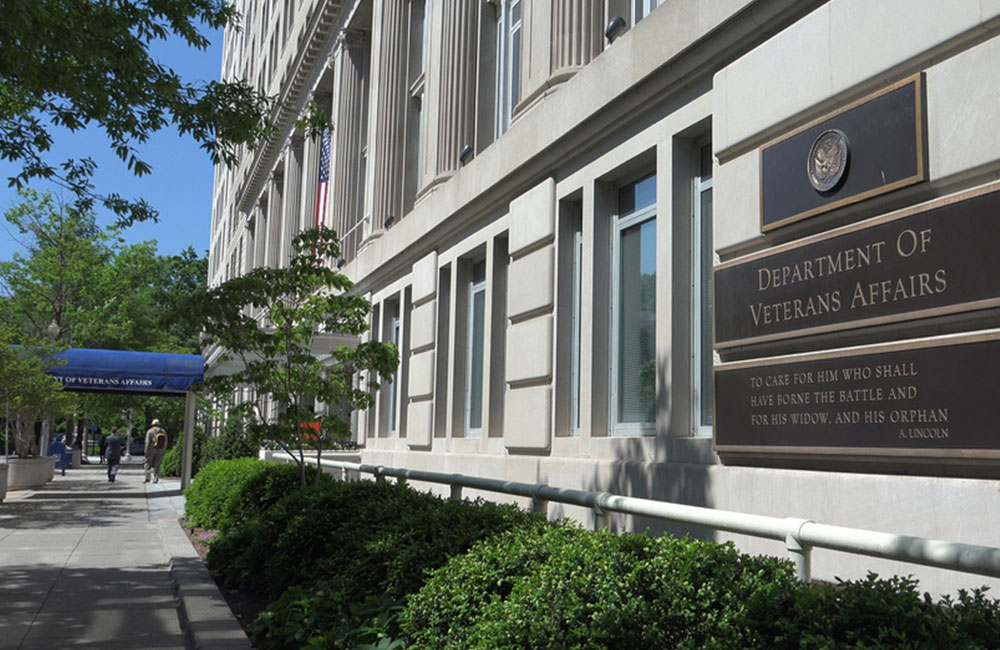DOE, USPTO Navigate Modernization Ahead of a Hybrid Workforce

The onset of the pandemic prompted rapid technology innovation and implementation to support a new hybrid workforce. Now agencies are relying on that momentum to keep pushing modernization efforts.
The U.S. Patent and Trademark Office was well-prepared for the shift to remote work, noted CIO Jamie Holcombe. 80% of USPTO’s examiners were teleworking before the pandemic, setting them up for a quick transition.
“The thing that we depended upon was the fact that we could scale that example, we could scale that foundation that we had,” Holcombe said at ATARC’s Jan. 25 virtual event.
Now that many federal agencies have mastered telework, the new challenge is managing the return to offices and meeting the needs of a hybrid workforce. While the majority of the Department of Energy is currently working remotely, new technology efforts are supporting a hybrid environment.
“We need to enable our environment so that if there’s a group of people in the conference room, the folks who are at home are on an even footing,” said CIO Ann Dunkin. “We’re setting up our spaces to be more supportive of that. One of the apps that we have found when everyone went home is the ability to do brainstorming and whiteboarding.”
But integrating a new technology isn’t always as easy as finding the right tools for the job — CIOs also have to ensure that their workforce is prepared to use them. For Holcombe, inspiring staff to embrace new technology is the key to successful implementation.
“The patent office has been around for over 200 years,” Holcombe said. “These people know what they’re doing, so trying to tell them to do something different is like ‘Yeah, right.’ But you take different examples, and you slowly build a momentum where you get a whole culture of, ‘Wait a second, that can work, that can change.’”
Dunkin also emphasized the importance of workforce buy-in.
“You can build all those tools and capabilities, but really, you also have to build the enablers — which are people and processes in procurement and in your culture,” Dunkin said. “We need to continue our focus on changing our cultures to embrace modern development technologies. Using the best practices across procurement, the best practices across hiring, and simplifying our processes so that all of these things enable us to build these very resilient, scalable, modern tools in the cloud.”
At USPTO, Holcombe shifted his office from a ‘project’ to a ‘product’ management system.
“We took over 160 projects and we mapped them to 30 products,” he said. “Now we have a product owner, it’s not just the IT guy in charge of a project. Now it’s a business owner in charge of that function, making sure that they’re creating the priorities and calculating the trade-offs.”
The product management approach has helped the Office of Technology prioritize its projects and integrate agile and DevSecOps processes. Meanwhile, Dunkin is creating a playbook to help guide DOE through building scalable models to push modernization.
“We really need to take those pockets of modern practices and tools and scale them out across our departments and agencies,” Dunkin said. “At DOE, we’re building out a playbook of how to do that — how to scale modernization across a department and agency, and we want to share that across the government.”
Ultimately, the playbook’s model also comes down to winning over the workforce for successful IT adoption.
“Some of the plays in that are fairly obvious,” Dunkin said. “Things like building a low-code platform that you can use across organization, building a rapid ATO process, having a DevSecOps pipeline that’s replicable across your organization. Basically, making it easy for people to use your modern tools, and hard for them to do things that are outside that modern process.”
This is a carousel with manually rotating slides. Use Next and Previous buttons to navigate or jump to a slide with the slide dots
-

White House Science Chief: US-Driven AI Sets Global Standards
Michael Kratsios outlined how American AI technology on the global stage will help standardize the tech and counter China’s influence.
5m read -

Modernizing Critical Infrastructure in the Face of Global Threats
Officials are expanding the latest strategies in boosting defense infrastructure, including securing satellite communications, upgrading enterprise-wide technology, optimizing data management.
20m watch -

Trump AI Orders Call for Speed in Building Infrastructure
The directives call for expanding AI infrastructure, streamlining federal permitting and promoting AI exports.
4m read -

DOD Accelerates Software Modernization with Agile DevSecOps Push
The Pentagon's software implementation plan tackles cultural hurdles and integrates security early to deliver critical capabilities faster.
6m read -

White House Unveils AI Action Plan to Secure Global Dominance
The strategy outlines steps to accelerate private sector innovation, build critical infrastructure and advance U.S. leadership in AI policy and security.
3m read -

VA's Platform One Powers Rapid Innovation to Bolster Digital Services
VA's Platform One accelerates software development timelines from weeks to hours, ultimately enhancing digital services for veterans.
5m read -

Federal Leaders Receive Federal IT Efficiency Flywheel Awards from GovCIO Media & Research
Five federal IT leaders received Flywheel Awards for driving innovation and modernizing technology at the Federal IT Efficiency Summit.
5m read -

Doing More with Less is Muscle Memory for IRS, Former Deputy CIO Says
Darnita Trower discusses her experience, the legacy she’s left behind and how she pushed the IRS to modernize itself,
20m watch -

Opinion: Original Intelligence Is the Missing Piece for AI Transformation
Limitations of AI agents and development drive growing needs for workforce development and "original intelligence."
3m read -

VA CIO Targets Modern IT and Smarter Workforce Alignment
Agency leaders told lawmakers they are focused on trimming legacy systems and restructuring its workforce to streamline operations.
3m read -

Pentagon's $200M AI Contracts Signal Broader Effort to Transform Talent
The Army is leveraging Silicon Valley, reservist programs and new hiring strategies to integrate critical digital skills in its ranks.
5m read -

AI Foundations Driving Government Efficiency
Federal agencies are modernizing systems, managing risk and building trust to scale responsible AI and drive government efficiency.
43m watch




